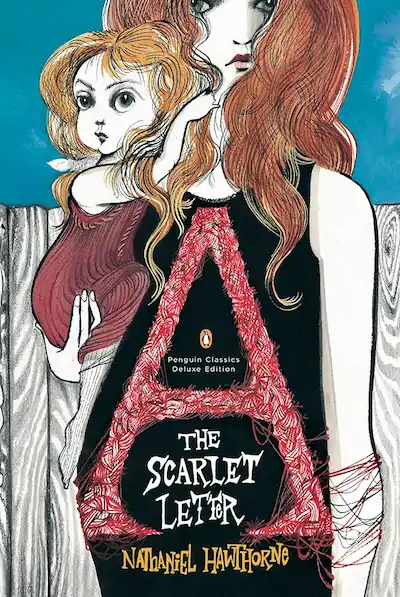The Scarlet Letter

I’ve done myself a treat by finishing The Scarlet Letter, by Nathaniel Hawthorne.
The edition I read included at the start, an introductory piece entitled The Custom-House which some editions apparently omit. It is a strange item although I did enjoy reading it. Certainly not required in any way for the enjoyment or understanding of the novel. It recounts a fiction of how and where the notes which inspired the book were discovered, including the actual bit of embroidered cloth which Hester Prynne wore as her mark of shame.
I had avoided choosing to read The Scarlet Letter as I was not inclined to engage what I assumed would be a long description of Puritan dreariness. In fact, while the setting and events were dreary, the experience of reading the book was not so. I was captivated by the strength of Hester Prynne and eager to learn her fate. I completed the 250 page book inside a day and a half, which for me is quite quick.
The Scarlet Letter came into my list of reading choices as I am also reading The American Canon by Harold Bloom. I am on the chapter about Nathaniel Hawthorne and I though it would be a richer experience if I had completed some of Hawthorne’s work while reading Bloom’s critique. I thought surely I had read at least a short story by him, but it turned out not to be the case. Now rectified.
As I write now in the immediate after-glow of the story, the most interesting aspect is not my collection of thoughts on the characters, their beliefs, and their motivations, but rather the effect, if subtle, on the style in which I am writing these paragraphs. How could Hawthorne’s style of prose so quickly have insinuated itself into my choice of words and phrases?
Apparently, even as I age, I am still quite impressionable in the face of a well styled turn of phrase.
Having to do with: Reading